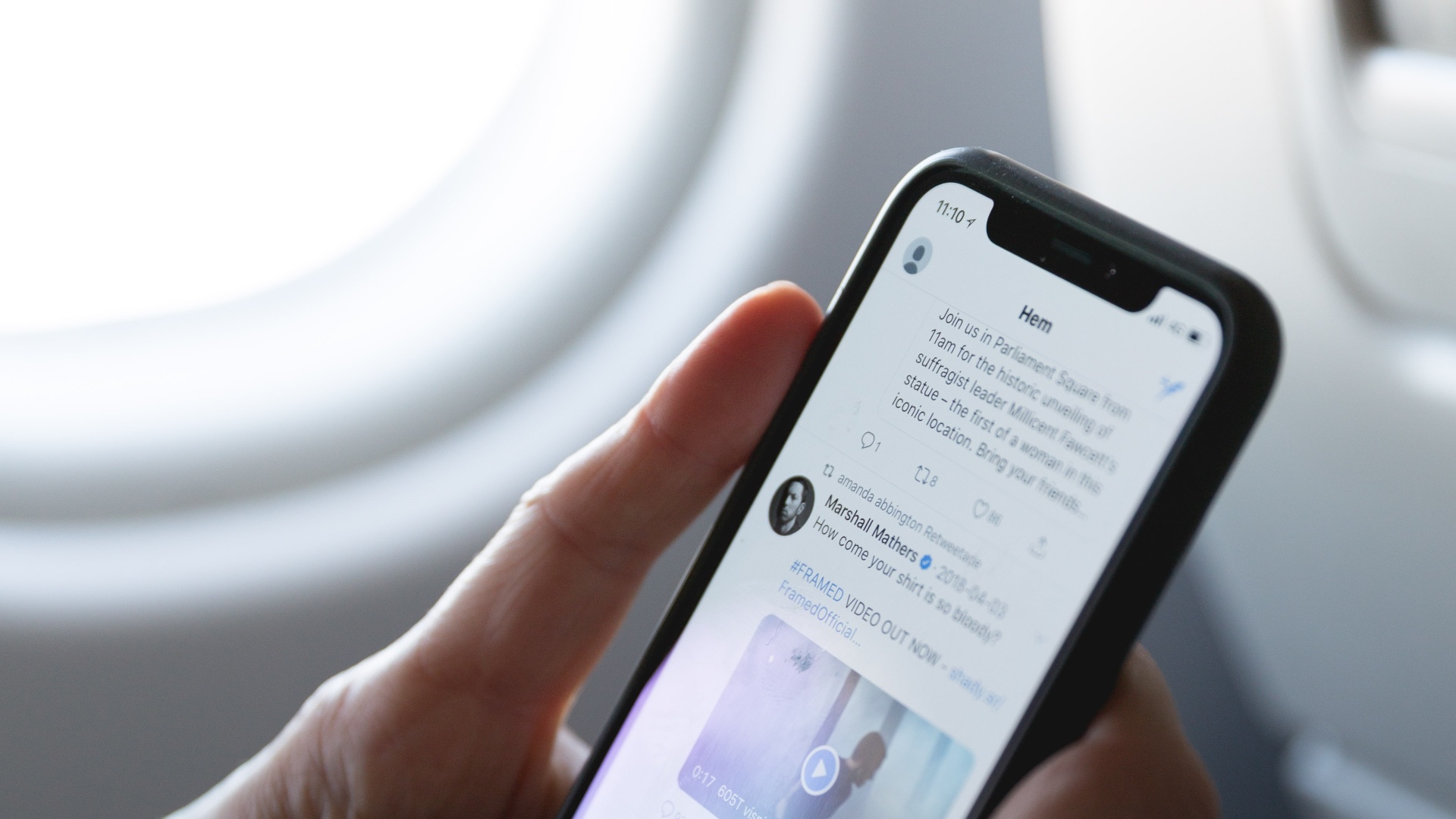Twitter on the plane? The EU wants to make it possible.
Anyone who flies regularly knows the safety instructions before take-off well enough: Stow your carry-on bags securely under the seats, fasten your seat belts, mind the overhead oxygen masks in case of a depressurization, and turn off your cell phones for the entire flight.
The latter could soon sound different, at least here in Europe. Because the EU Commission has made a decision that should mean the end of seclusion above the clouds.
EU Commission: Soon 5G in the plane
As the EU Commission reports, aircraft should be allowed to use their own 5G frequencies in the future
So that the planes can establish this connection with the rest of the mobile network, they should be equipped with a so-called pico cell. This is a small radio cell that has a radio range of up to 200 meters. So far, these pico cells have mainly been used for in-house applications in the building and property sector.
Compared to their larger siblings, pico cells have a significantly smaller range. (Image source: Qorvo)
The cell will transmit calls, text messages and other data from connected users via satellite to the cellular network on the ground. To this end, the EU Commission wants to provide its own 5G frequencies that the aircraft can use for data traffic.
In addition to private travellers, industry should also benefit from this, as Thierry Breton, EU Commissioner for Internal Market and Services, reports: 5G will enable innovative services for people and growth opportunities for European companies. The sky’s no longer the limit when it comes to what’s possible with a super-fast, high-performance connection.
What else is happening in the world of airplanes? A lot, for example with the engines:
more on the subject
1,000,000 liters of hydrogen instead of 250,000 liters of petrol
The airlines have to play along
The EU Commission does not mention a specific date when the technology will actually be used in Europe. But even after that, there are still hurdles that need to be cleared before making phone calls and surfing above the clouds.
So it’s up to the flight companies to equip their planes with the pico cells required for the network. In addition, airlines could charge for the connection to the ground network in order to recoup the cost of the conversion.
At least one concern has already been dealt with. Because as the interest group ETNO reportsthe frequencies used by mobile communications and aircraft controls are far enough apart that they do not affect each other either on board or at the airport.
You don’t have to worry as much about slow internet on the plane. But maybe at home. My colleague Nils will tell you why:
more on the subject
My simple mistake shows why you should check your WiFi












